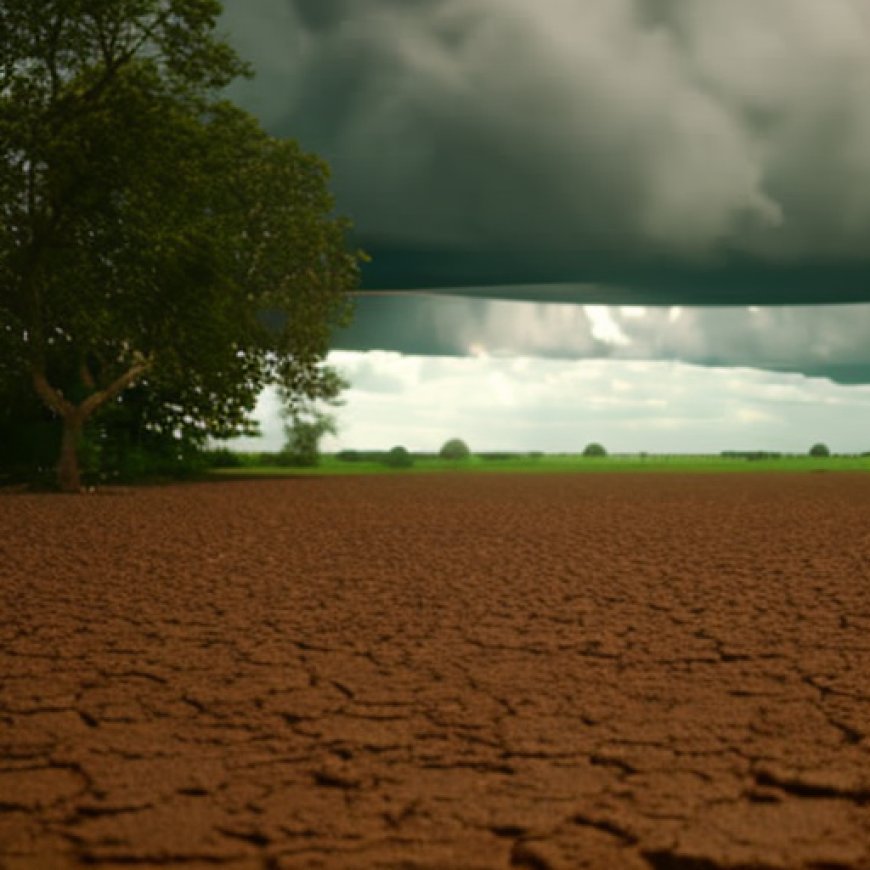Study to evaluate intensive rainfall and drought issues
Study to evaluate intensive rainfall and drought issues Herald Palladium


A Team of Researchers Evaluates Soil Health Changes from Intensive Rainfall and Drought

Introduction
A team of researchers from Michigan State University has been awarded a $750,000 grant from the U.S. Department of Agriculture’s National Institute of Food and Agriculture. The grant aims to evaluate soil health changes resulting from intensive rainfall and/or drought. This project aligns with the Sustainable Development Goals (SDGs) set by the United Nations, particularly Goal 15: Life on Land, which focuses on protecting, restoring, and promoting sustainable use of terrestrial ecosystems.
Research Team
- Alexandra Kravchenko – Professor in the Department of Plant, Soil and Microbial Sciences
- Sarah Evans – Associate Professor and Microbial Ecologist in the Department of Integrative Biology and the W.K. Kellogg Biological Station
- Andrey Guber – Professor in the Department of Plant, Soil and Microbial Sciences, specializing in soil physics, hydrology, and modeling transport of microbes in soil
- James Moran – Associate Professor in the Departments of Integrative Biology and Plant, Soil and Microbial Sciences, studying nutrient exchange in soil
Research Objectives
The research team aims to explore the effects of extreme droughts and intensive rainfalls on soils in Midwest corn, soybean, and wheat production systems. These changes in weather patterns are already occurring and have significant implications for agricultural sustainability. By addressing this issue, the researchers contribute to SDG 2: Zero Hunger, SDG 13: Climate Action, and SDG 15: Life on Land.
Methodology
The team will conduct a four-year experiment at the W.K. Kellogg Biological Station in Hickory Corners, Michigan. They will use rainout shelters to create controlled precipitation conditions. The study will compare conventional tillage and no-till management, which are the two most common tillage practices in the Midwest, with “old field” land that has been left to grow herbaceous annual vegetation. The researchers will collect soil samples and analyze various soil health indicators such as total carbon and nitrogen, bulk density, microbial biomass, enzyme activity, and aggregate stability. High-resolution imaging technologies will also be used to examine soil structure at a microscopic level.
Expected Outcomes
The research findings will be used to develop a predictive model on the potential effects of excessive rainfall and drought on soil health. This model will help farmers make informed decisions and implement cost-effective strategies for their operations. By promoting sustainable agricultural practices, the project contributes to SDG 12: Responsible Consumption and Production and SDG 15: Life on Land.
Conclusion
This research project emphasizes the importance of soil health for long-term agricultural sustainability. By evaluating the impacts of extreme weather events on soils, the team aims to equip farmers with the knowledge and tools needed to adapt to changing rainfall patterns. Ultimately, this work aligns with SDG 2: Zero Hunger and SDG 15: Life on Land, as it contributes to ensuring food security and protecting terrestrial ecosystems.
SDGs, Targets, and Indicators in the Article
1. Which SDGs are addressed or connected to the issues highlighted in the article?
- SDG 2: Zero Hunger
- SDG 13: Climate Action
- SDG 15: Life on Land
2. What specific targets under those SDGs can be identified based on the article’s content?
- SDG 2.4: By 2030, ensure sustainable food production systems and implement resilient agricultural practices that increase productivity and production, that help maintain ecosystems, that strengthen capacity for adaptation to climate change, extreme weather, drought, flooding, and other disasters, and that progressively improve land and soil quality.
- SDG 13.1: Strengthen resilience and adaptive capacity to climate-related hazards and natural disasters in all countries.
- SDG 15.3: By 2030, combat desertification, restore degraded land and soil, including land affected by desertification, drought, and floods, and strive to achieve a land degradation-neutral world.
3. Are there any indicators mentioned or implied in the article that can be used to measure progress towards the identified targets?
Yes, the following indicators can be used to measure progress towards the identified targets:
- Total carbon and nitrogen content in the soil
- Bulk density of the soil
- Microbial biomass in the soil
- Enzyme activity in the soil
- Aggregate stability of the soil
- Changes in soil structure at a spatial scale of a few microns
Table: SDGs, Targets, and Indicators
| SDGs | Targets | Indicators |
|---|---|---|
| SDG 2: Zero Hunger | SDG 2.4: By 2030, ensure sustainable food production systems and implement resilient agricultural practices that increase productivity and production, that help maintain ecosystems, that strengthen capacity for adaptation to climate change, extreme weather, drought, flooding, and other disasters, and that progressively improve land and soil quality. |
|
| SDG 13: Climate Action | SDG 13.1: Strengthen resilience and adaptive capacity to climate-related hazards and natural disasters in all countries. |
|
| SDG 15: Life on Land | SDG 15.3: By 2030, combat desertification, restore degraded land and soil, including land affected by desertification, drought, and floods, and strive to achieve a land degradation-neutral world. |
|
Behold! This splendid article springs forth from the wellspring of knowledge, shaped by a wondrous proprietary AI technology that delved into a vast ocean of data, illuminating the path towards the Sustainable Development Goals. Remember that all rights are reserved by SDG Investors LLC, empowering us to champion progress together.
Source: heraldpalladium.com

Join us, as fellow seekers of change, on a transformative journey at https://sdgtalks.ai/welcome, where you can become a member and actively contribute to shaping a brighter future.







